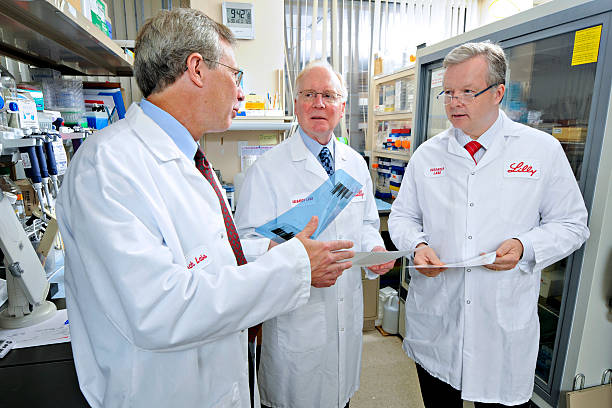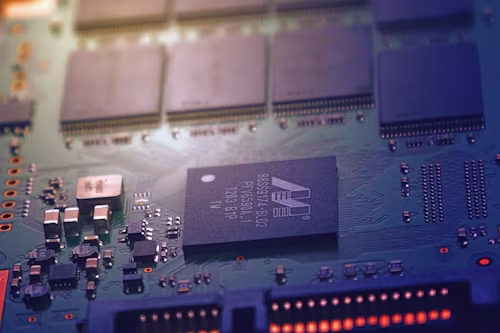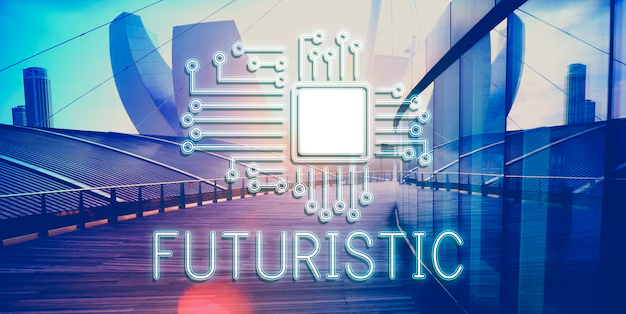“7 Innovations at Eli Lilly Revolutionizing Pharma Research”

Introduction to Eli Lilly Technology Center
The Eli Lilly Technology Center stands as a beacon of innovation in pharmaceutical research and development. Located in Indianapolis, Indiana, this cutting-edge facility is dedicated to advancing medical science through technology and research. As one of the leading technology hubs in the pharmaceutical industry, the center plays a crucial role in developing new therapies and improving existing treatments.
In this article, we will explore seven key innovations at the Eli Lilly Technology Center that are shaping the future of pharmaceutical research. We will delve into the technology driving these advancements, the impact on drug development, and what makes this center a cornerstone of modern medicine.
1. Advanced Drug Discovery Platforms
A New Era in Drug Development
At the heart of Eli Lilly Technology Center’s innovations is its advanced drug discovery platform. This platform utilizes state-of-the-art technologies, such as high-throughput screening and artificial intelligence, to accelerate the identification of potential drug candidates. By analyzing vast datasets and predicting how compounds interact with biological targets, researchers can rapidly pinpoint promising leads.

Key Benefits:
- Increased Efficiency: Speed up the drug discovery process.
- Cost Reduction: Lower the costs associated with early-stage drug development.
- Enhanced Accuracy: Improve the precision of identifying viable drug candidates.
External Link: Learn more about high-throughput screening technologies on NIH’s official website.
2. Cutting-Edge Genomic Research
Unlocking the Secrets of Genetics
Genomic research at the Eli Lilly Technology Center involves analyzing genetic information to understand diseases at a molecular level. This research is crucial for developing targeted therapies that address the root causes of diseases rather than just symptoms. By leveraging advanced genomic technologies, the center is paving the way for personalized medicine.
Key Benefits:
- Tailored Treatments: Develop drugs that are more effective for individual genetic profiles.
- Disease Understanding: Gain deeper insights into the genetic basis of diseases.
- Innovation: Drive forward the development of novel therapies.
3. State-of-the-Art Biologics Production
Revolutionizing Drug Manufacturing
Biologics, which are complex drugs derived from living cells, require sophisticated production methods. The Eli Lilly Technology Center is equipped with advanced facilities for the production of biologics, ensuring high quality and efficiency. This includes cutting-edge bioreactor systems and purification technologies that maintain the integrity and efficacy of biologic drugs.
Key Benefits:
- Enhanced Purity: Produce high-quality biologic drugs with fewer impurities.
- Scalability: Scale up production to meet global demand.
- Efficiency: Optimize manufacturing processes to reduce costs.
4. Innovative Computational Modeling
Simulating Drug Interactions
Computational modeling at the Eli Lilly Technology Center involves using sophisticated algorithms to simulate how drugs interact with biological systems. This technology helps in predicting the efficacy and safety of new drugs before they enter clinical trials. By modeling drug interactions in silico, researchers can make more informed decisions about which compounds to advance.
Key Benefits:
- Predictive Power: Anticipate potential drug interactions and side effects.
- Accelerated Development: Shorten the time required for preclinical studies.
- Resource Optimization: Focus resources on the most promising drug candidates.

5. High-Resolution Imaging Techniques
Seeing the Unseen
High-resolution imaging technologies are crucial for understanding the detailed structure of biological molecules and tissues. At the Eli Lilly Technology Center, advanced imaging techniques such as cryo-electron microscopy and 3D imaging are used to visualize drug targets at an unprecedented resolution. This detailed view aids in the design of more effective drugs.
Key Benefits:
- Detailed Visualization: Observe molecular structures and interactions at high resolution.
- Improved Drug Design: Enhance the design of drugs by understanding their targets better.
- Breakthrough Discoveries: Enable discoveries that were previously not possible.
6. Integrated Data Analytics
Transforming Data into Insights
The integration of data analytics at the Eli Lilly Technology Center allows for the synthesis of vast amounts of research data. By applying machine learning and big data analytics, researchers can identify patterns and insights that drive drug development. This approach ensures that decision-making is data-driven and evidence-based.
Key Benefits:
- Informed Decisions: Base drug development decisions on comprehensive data analysis.
- Efficiency: Streamline the research process by integrating data from various sources.
- Innovation: Uncover new research directions and opportunities.
7. Collaborative Research Initiatives
Partnering for Progress
The Eli Lilly Technology Center actively engages in collaborative research initiatives with academic institutions, biotechnology companies, and other stakeholders. These partnerships enhance the research capabilities of the center and foster innovation through shared expertise and resources.
Key Benefits:
- Shared Expertise: Leverage the knowledge and resources of partner organizations.
- Accelerated Innovation: Speed up the development of new therapies through collaboration.
- Broader Impact: Expand the reach and impact of research initiatives.
In-Depth Analysis of Innovations at Eli Lilly Technology Center
The Eli Lilly Technology Center has established itself as a leading force in pharmaceutical innovation. Each of the seven key innovations discussed not only advances the field of drug development but also sets new standards for how pharmaceutical research is conducted. Let’s dive deeper into how these innovations are shaping the future of medicine.

Advanced Drug Discovery Platforms
High-Throughput Screening
High-throughput screening (HTS) is a technology that allows researchers to test thousands of compounds quickly. This process involves automated systems that can evaluate the biological activity of numerous samples simultaneously. The Eli Lilly Technology Center uses HTS to rapidly identify promising drug candidates from large chemical libraries.
Advantages:
- Speed: Accelerates the identification of active compounds.
- Automation: Reduces human error and increases throughput.
- Scalability: Handles large volumes of samples efficiently.
Artificial Intelligence in Drug Discovery
Artificial intelligence (AI) is transforming drug discovery by analyzing complex biological data and predicting the interactions between drugs and their targets. The Eli Lilly Technology Center employs AI algorithms to streamline the drug discovery process, making it more efficient and accurate.
Advantages:
- Predictive Analytics: Enhances the ability to predict drug efficacy and safety.
- Decision Support: Assists researchers in making informed decisions about drug candidates.
Cutting-Edge Genomic Research
CRISPR Technology
CRISPR-Cas9 is a revolutionary tool in genomic research that allows for precise editing of DNA. The Eli Lilly Technology Center utilizes CRISPR to modify genes and study their effects on disease processes. This technology enables researchers to investigate genetic variations and develop targeted treatments.

Advantages:
- Precision: Allows for accurate gene editing.
- Versatility: Applicable to a wide range of genetic studies.
- Efficiency: Accelerates the pace of genetic research.
Genomic Sequencing
Genomic sequencing involves determining the complete DNA sequence of an organism’s genome. The Eli Lilly Technology Center uses next-generation sequencing (NGS) technologies to analyze genetic data and identify potential drug targets.
Advantages:
- Comprehensive Data: Provides a complete view of genetic variations.
- Personalization: Supports the development of personalized medicine.
- Discovery: Identifies new genetic targets for drug development.
State-of-the-Art Biologics Production
Bioreactor Systems
Bioreactors are vessels where biological reactions occur under controlled conditions. The Eli Lilly Technology Center uses advanced bioreactor systems to produce biologics at scale. These systems ensure that biologics are produced consistently and meet quality standards.
Advantages:
- Control: Maintains optimal conditions for cell growth and product synthesis.
- Scalability: Facilitates large-scale production.
- Quality Assurance: Ensures product consistency and purity.
Purification Technologies
Purification technologies are essential for isolating biologics from complex mixtures. The Eli Lilly Technology Center employs advanced purification methods, such as affinity chromatography, to ensure that biologics are free from contaminants.
Advantages:
- Purity: Achieves high levels of product purity.
- Efficiency: Reduces processing time and costs.
- Safety: Minimizes the risk of contamination.
Innovative Computational Modeling
Molecular Dynamics Simulations
The Eli Lilly Technology Center uses MD simulations to study the behavior of drug molecules in various environments, helping to predict their interactions with biological targets.
Advantages:
- Insight: Provides detailed information about molecular interactions.
- Prediction: Forecasts the behavior of drug molecules in the body.
- Optimization: Assists in designing more effective drugs.
Structure-Based Drug Design
Structure-based drug design involves using the 3D structure of biological targets to design new drugs. The Eli Lilly Technology Center applies this approach to create drugs that fit precisely into their target sites, enhancing their effectiveness.
Advantages:
- Precision: Designs drugs that specifically interact with target proteins.
- Efficiency: Reduces the time needed for drug development.
- Innovation: Enables the creation of novel therapeutic agents.
High-Resolution Imaging Techniques
Cryo-Electron Microscopy
Cryo-electron microscopy (cryo-EM) allows researchers to visualize biological molecules in their native state at extremely high resolutions. The Eli Lilly Technology Center uses cryo-EM to study the structure of drug targets and complex biomolecular assemblies.
Advantages:
- Resolution: Achieves near-atomic resolution images.
- Preservation: Maintains the native state of biological samples.
- Discovery: Facilitates the study of previously inaccessible molecular structures.
3D Imaging Technologies
3D imaging technologies provide detailed, three-dimensional views of biological tissues and molecules. The Eli Lilly Technology Center utilizes these technologies to investigate the spatial organization of cells and tissues, aiding in drug discovery and development.
Advantages:
- Detail: Offers in-depth views of biological structures.
- Accuracy: Enhances the understanding of drug-target interactions.
- Application: Supports various research and development processes.
Integrated Data Analytics
Machine Learning Algorithms
Machine learning algorithms analyze large datasets to uncover patterns and trends. The Eli Lilly Technology Center uses machine learning to interpret complex biological data, predict drug responses, and optimize research strategies.
Advantages:
- Pattern Recognition: Identifies hidden patterns in data.
- Predictive Power: Forecasts drug responses and outcomes.
- Optimization: Enhances research efficiency and effectiveness.
Big Data Integration
Big data integration involves combining and analyzing large volumes of data from diverse sources. The Eli Lilly Technology Center integrates data from clinical trials, preclinical studies, and other research activities to generate comprehensive insights.
Advantages:
- Comprehensive Analysis: Provides a holistic view of research data.
- Informed Decision-Making: Supports evidence-based research decisions.
- Innovation: Drives new research directions and discoveries.
Collaborative Research Initiatives

Academic Partnerships
The Eli Lilly Technology Center collaborates with leading academic institutions to advance research in various fields. These partnerships enable the exchange of knowledge and resources, fostering innovation and accelerating drug development.
Advantages:
- Knowledge Sharing: Leverages academic expertise and research capabilities.
- Resource Access: Gains access to cutting-edge technologies and facilities.
- Innovation: Enhances research through collaborative efforts.
Industry Collaborations
Industry collaborations involve partnering with biotechnology companies and other pharmaceutical firms. The Eli Lilly Technology Center engages in these partnerships to enhance its research capabilities and develop new therapies.
Advantages:
- Shared Expertise: Utilizes the strengths of partner organizations.
- Accelerated Development: Speeds up the development of new drugs.
- Broader Impact: Expands the reach and impact of research initiatives.
FAQs
1. What is the primary focus of the Eli Lilly Technology Center?
The primary focus of the Eli Lilly Technology Center is to advance pharmaceutical research and development through innovative technologies and collaborative research.
2. How does advanced drug discovery benefit pharmaceutical research?
Advanced drug discovery platforms enhance the efficiency, accuracy, and cost-effectiveness of identifying potential drug candidates.
3. What role does genomic research play in drug development?
Genomic research helps in understanding diseases at a molecular level, leading to the development of targeted and personalized therapies.
4. Why are biologics production technologies important?
Biologics production technologies ensure the high quality and efficiency of manufacturing complex drugs derived from living cells.
5. How does computational modeling contribute to drug research?
Computational modeling predicts drug interactions and safety, helping to make informed decisions about advancing drug candidates.
6. What are the advantages of high-resolution imaging in drug research?
High-resolution imaging allows for detailed visualization of molecular structures and interactions, aiding in the design of more effective drugs.
7. How does integrated data analytics improve drug development?
Integrated data analytics transforms large datasets into actionable insights, facilitating data-driven decision-making and accelerating research.
Conclusion
The Eli Lilly Technology Center exemplifies how advanced technologies and innovative research practices can drive progress in the pharmaceutical industry. From cutting-edge drug discovery platforms to high-resolution imaging and collaborative research initiatives, the center is at the forefront of transforming pharmaceutical research and development. These innovations not only enhance the efficiency and effectiveness of drug development but also pave the way for new and improved therapies that can make a significant impact on global health.
For more on cutting-edge research, check out our article on breakthroughs in pharmaceutical technology.
For More Blog Visit: Voucheez
“Top 7 Advantages of Phoenix Technologies for Business Success”



